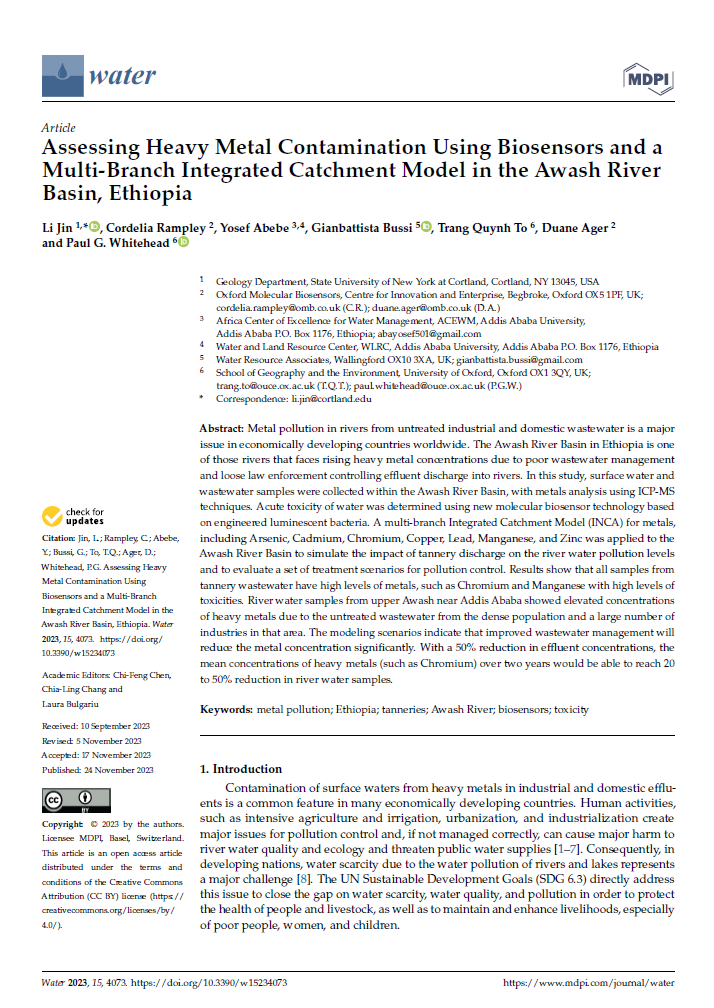Authors: Li Jin, Cordelia Rampley, Yosef Abebe, Gianbattista Bussi, Trang Quynh To, Duane Ager and Paul G. Whitehead
Metal pollution in rivers from untreated industrial and domestic wastewater is a major issue in economically developing countries worldwide. The Awash River Basin in Ethiopia is one of those rivers that faces rising heavy metal concentrations due to poor wastewater management and loose law enforcement controlling effluent discharge into rivers. In this study, surface water and wastewater samples were collected within the Awash River Basin, with metals analysis using ICP-MS techniques. Acute toxicity of water was determined using new molecular biosensor technology based on engineered luminescent bacteria. A multi-branch Integrated Catchment Model (INCA) for metals, including Arsenic, Cadmium, Chromium, Copper, Lead, Manganese, and Zinc was applied to the Awash River Basin to simulate the impact of tannery discharge on the river water pollution levels and to evaluate a set of treatment scenarios for pollution control. Results show that all samples from tannery wastewater have high levels of metals, such as Chromium and Manganese with high levels of toxicities. River water samples from upper Awash near Addis Ababa showed elevated concentrations of heavy metals due to the untreated wastewater from the dense population and a large number of industries in that area. The modeling scenarios indicate that improved wastewater management will reduce the metal concentration significantly. With a 50% reduction in effluent concentrations, the mean concentrations of heavy metals (such as Chromium) over two years would be able to reach 20 to 50% reduction in river water samples.

